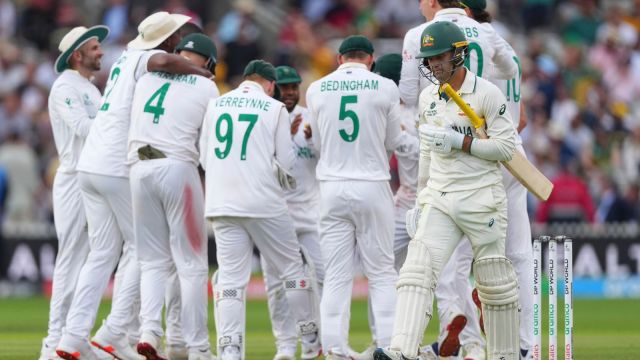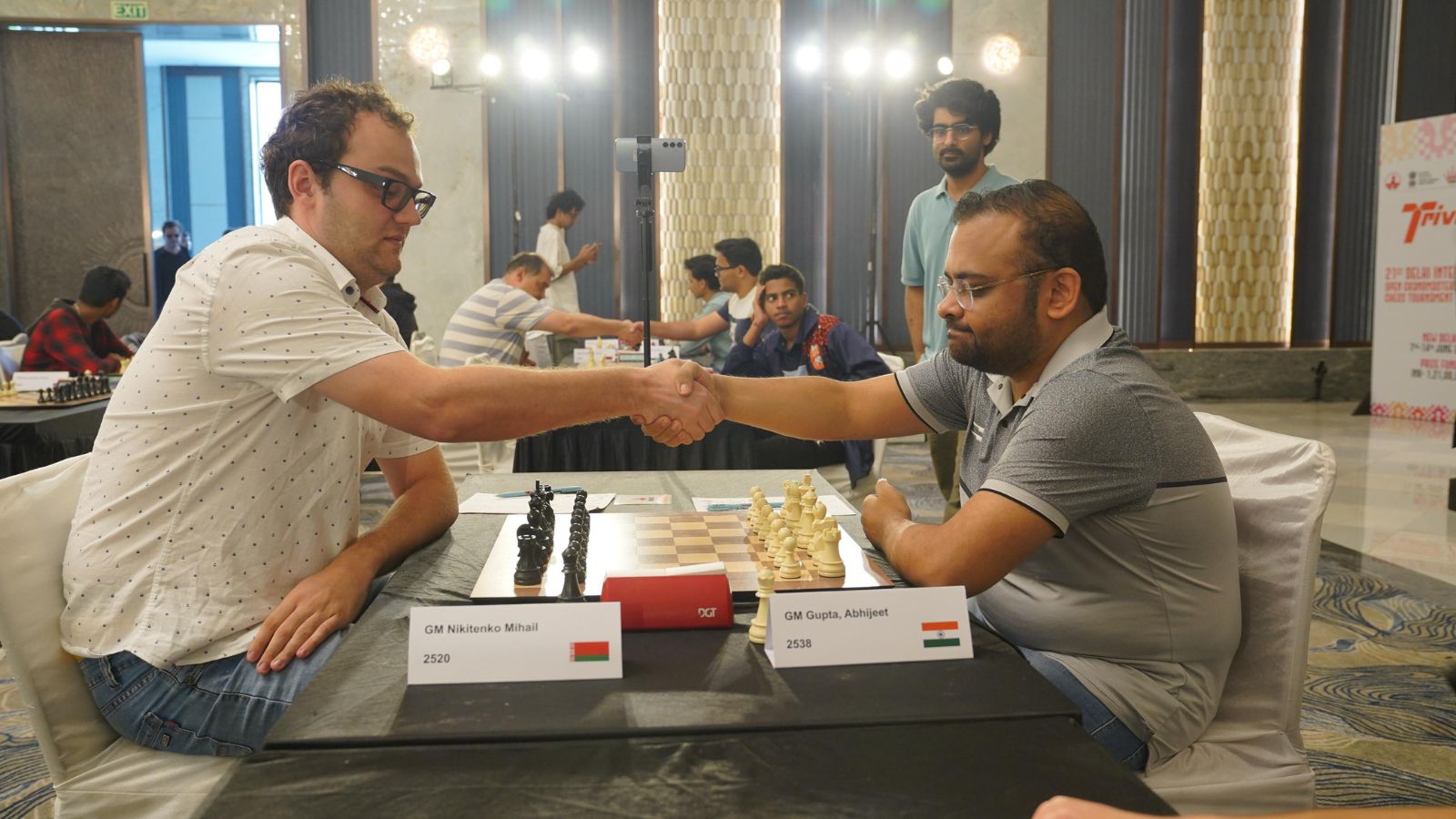ARTICLE AD BOX
 South Africa players celebrate as Australia's Alex Carey, right, walks off the field after losing his wicket on day two of the World Test Championship final between South Africa and Australia at Lord's cricket ground in London, Thursday, June 12, 2025. (AP Photo/Kirsty Wigglesworth)
South Africa players celebrate as Australia's Alex Carey, right, walks off the field after losing his wicket on day two of the World Test Championship final between South Africa and Australia at Lord's cricket ground in London, Thursday, June 12, 2025. (AP Photo/Kirsty Wigglesworth)
Before the day of breathless ebbs and flows ended, Kagiso Rabada imparted one last twist to keep the WTC final on a knife’s edge. In the penultimate over of the day, he removed the fire-fighting Alex Carey. The wicket-keeper batsman and Mitchell Starc had slammed the door on South Africa’s faces with a 61-run eighth-wicket stand that took the lead past 200, but Rabada’s strike opened the door for his team to sneak in a foot.
Both teams would be equally relieved and dismayed. It could have been worse for South Africa when Pat Cummins’s six-wicket feat bundled them up for 138; however, the picture could have been rosier after they had reduced Australia to 73 for 7, after which they recovered to post 144 for 8. Similarly, Australia’s batsmen would have been furious with themselves for the implosion, just as they would be relieved with their fightback that extended the lead to 218, already a formidable target. But had everything went along the dreamy script, the day of multiple comebacks and a show of remarkable character, would have been less captivating.
The first comeback was Australia’s, when Cummins instigated a collapse wherein South Africa lost their last six for 44 runs. Next was South Africa’s turn, Rabada and Lungi Ngidi slicing through the heart of their batting, before Carey’s stoic 41 restored Australia’s upper hand.
For much of the day, South Africa were staggering on the floor. But on either side of tea, they produced an absorbing fightback. The real ignition of belief arrived when Ngidi ejected Steve Smith with a straight, full length ball without any maliciousness. Smith, uncharacteristically played around the ball, perhaps imagining the non-existent in-swing. Even the umpire was hesitant and shot down the appeal. Ngidi pleaded with his captain Temba Bavuma for a review. Bavuma wondered about the ball’s height, but he was too genial to refuse his bowler’s urgings. But when the screen on the ground flashes three reds, Ngidi shrieked in euphoria, amidst teammates piling on his robust frame.
In the space of adding 20 runs, Australia lost their biggest beacon of hope, the most comfortable batsman on a difficult strip, among the greatest match-winning batsmen of his era. Smith’s departure turned a flicker of hope into a raging flame of belief. There was renewed energy and intensity. The fielders picked up their voice, cheering each and every ball, leaping to stop every run, even if Australia’s batsmen were disinclined to steal a run, and they appealed for everything.
There was no better ball to drill the reality that it was not swing and seam alone that tormented batsmen. But sometimes, their own indiscretion and the pressure piled on by a high-class fast-bowling pack who produced a concerted show for the first time in the game. Ironically, it swung less that it often does at Lord’s. The average degree of swing is 1.1 degree; in the final it swung nearly half as much (.6). The seam movement was more or less similar (.7 as opposed to a mean of .6), but this owes to the expertise of bowlers to move the ball off the seam, a staple in both Australia and South Africa.
Nonetheless, the exuberance of the moment could have turned against them too, as impatience crept after every wicketless ball. Travis Head, the tour de force of Australia’s triumph two years ago, was at the crease, plotting another counterattack. Beau Webster brimmed with the confidence of his 72 in the first innings. But Ngidi conjured a dreamy in-swinger to trap Webster in front. Four balls later, Wiaan Mulder’s wobble seaming ripper jagged back to beat Head’s front pad, inside edge and crash into the stumps. South Africa claimed ascendancy for the first time in the day.
The conspirators were two unusual suspects. Ngidi had endured a horrible first innings, when he released the pressure Rabada and Marco Jansen had injected. His lines went astray and his length was awry. On a surface that abetted swing and seam movement, he bled 5.62 runs, a criminal offence. He began on a similarly erratic note when he suddenly rediscovered the rhythm. He stuck suffocating lengths, hovered on good length or thereabouts, bending the ball deviously into the right handed batsmen and occasionally straightening it from an inward angle. A promising career rudely interrupted by injuries, he has begun to show the gifts that had earmarked him as Rabada’s long-term strike partner.
Story continues below this ad
He then whipped up a stinging yorker to dismantle the stumps of Cummins. He was woefully unlucky that some of the edges fell short of the slip fielders in a display of pure fast-bowling aggression. Similarly, Mulder atoned for his first-innings shoddiness with an economical spell, the wicket of Head aside, replete with variations and underscored with discipline.
The foursome made for a ferocious proposition. Rabada was as lethal as he was in the first inning and furnished the twin breakthroughs of Usman Khawaja and Cameron Green in three balls. Jansen blocked the recovery route by removing Marnus Labuschangne, his hard hands betraying the hard work he had displayed thus far. A few balls later, South Africa produced the spark that lit up the day, the wicket of Smith. But Australia, as they often do, dug an escape route. To glory or not, the third day would tell.



.png)
.png)
.png)


























 English (US) ·
English (US) ·